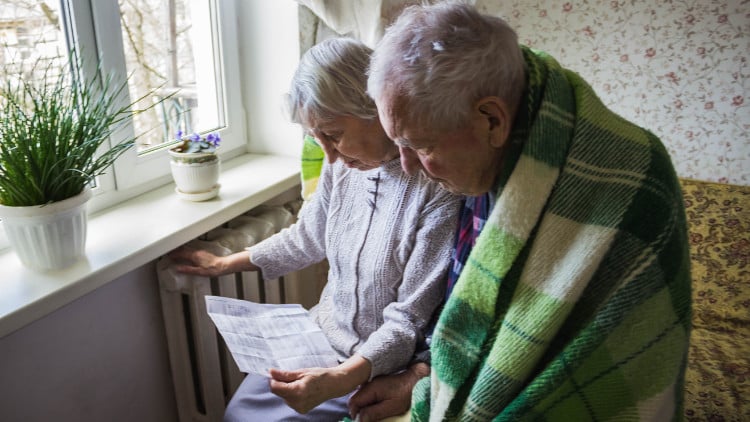
The EIB proposes that housing renovation and energy efficiency be financed via ‘securitised’ loans.


As Europe faces environmental breakdown, economic uncertainties and the cost-of-living and energy crises, the European Investment Bank is of increasing significance vis-à-vis European Union economic policy and the strategic investments made to respond to these crises. The EIB is the largest multilateral public bank, with almost €600 billion in loans outstanding.
Last week a leaked draft of the EIB’s ‘strategic roadmap’ for 2024-27 surfaced, poised for approval at the annual meeting of the bank’s board of governors—the finance ministers of the EU member states plus a European Commission representative—on June 21st. The draft was scheduled to be endorsed by the board of drectors today.
The invisibility of the document—had it not been leaked—is testament to the opacity of the bank’s decision-making. With neither public consultation nor engagement of the European Parliament, its trajectory for the coming years, deploying public money, is determined without citizens’ voices.
Pivotal shift
The draft would signal a pivotal shift for the bank, under the leadership of its newly appointed president and former Spanish economy minister, Nadia Calviño. Embarking on a path of increased lending and greater risk-taking, the roadmap is based on a discussion of priorities by the finance ministers at February’s informal meeting of the Economic and Financial Affairs Council (ECOFIN).
It suggests increasing the lending capacity of, and risk-taking by, the bank to ensure annual lending of €95 billion for the next three years, to sustain the higher volume reached in 2023. Achieving this target requires unanimous approval by the board of governors of an increase in the bank’s loans relative to the paid-in capital from member states. The roadmap however envisages removing this requirement from the EIB’s statute, which would allow lending capacity to be amended by a qualified majority.
Become a Social Europe Member
Support independent publishing and progressive ideas by becoming a Social Europe member for less than 5 Euro per month. Your support makes all the difference!
The increased lending would focus on eight ‘policy priorities’, which include the clean-technology industry, nuclear energy, critical-raw-materials supply chains, the Global Gateway, the military-industrial complex and digitalisation. Overall, they reflect the EU’s approach of using public finance to support the profits of private investors, defend the commercial interests of EU corporations and support geopolitical objectives, rather than financing a global just transition.
Not fit for purpose
Financing social infrastructure is also one of the priorities. The roadmap highlights the importance of investing in education, training (upskilling and reskilling), health, energy and efficient and accessible housing. In principle, such EIB investments are essential to ensure that public services are accessible to all—especially as the austerity entailed by the reimposition of the EU’s fiscal rules, post-pandemic, limits the ability of many member states to do so.
But the roadmap seems also to put in doubt the EIB’s commitment to social infrastructure. It contains a proposal to finance housing renovation and energy efficiency, essential to the green transition, through the ‘securitisation’ of loans. The greatest social need in terms of housing renovation is among lower-income households and this financial product is not fit for that purpose. The bank could create opaque and dangerous risks, while failing adequately to fund essential social and affordable housing.
The approach involves bundling loans for housing renovation and selling them on to other investors. A similar strategy with ‘sub-prime’ mortgage loans in the United States led to catastrophic outcomes with the crash of 2008. It created huge amounts of non-transparent risks, ultimately causing banks to collapse when homeowners defaulted on their mortgages because they had insufficient income to repay the loans.
Although the EU has a regulation for such securitisation, Finance Watch warns that systemic risk remains a problem, arguing that it is not the right tool to boost the European economy. Supervisors do not have the capacity to review operations properly and the reserves banks have set aside to absorb losses are insufficient.
Still unclear
The use, and the related risk, of securitised loans is concentrated in a few countries and banks, despite the goal being ostensibly to diffuse and diversify the risks associated with the loans to other investors, such as pension funds and insurance companies. Currently, securitised loans in Europe are found almost exclusively in France, Germany, Italy, Spain and the Netherlands. And they are mostly held by banks, which in 2023 had more securitised loans on their balance sheets (over 80 per cent in total) than they sold on to the market.
Despite the risks involved, the EIB would not be entering uncharted waters. During the pandemic, it utilised this technique in the implementation of the European Guarantee Fund, financing small and medium enterprises in times of crises. The practice was not free from critical evaluation: the Permanent Commission on European Union Policies of the Italian Chamber of Deputies said the operations were risky and had a high probability of generating losses.
How securitisation will be employed this time to finance housing renovation is still unclear. This raises concerns about potential risks and the effectiveness of mobilising funds where they are most needed. According to McKinsey, building renovation is one of the least profitable sectors, requiring a lot of investment to reach climate targets, and only 15 per cent of needed investments are commercially attractive.
Public finance
The draft roadmap says the EIB should finance ‘accessible housing’ but renovation is less affordable and commercially viable for lower-income homeowners. Hence, public finance has an important role: it should prioritise renovation lending that will not be done by the market, addressing public wellbeing while supporting climate targets.
While more finance for social infrastructure is urgently needed, the EIB should provide it in collaboration with other public actors, such as public banks and local authorities, and by mobilising money from institutional investors through traditional issuance of bonds, facilitating its own and other public banks’ capacities to lend for accessible housing renovation.
Where needed, these loans can be supported by guarantees and grants from the EU or national budgets. These additional funds must however be channelled towards improving lending conditions, resulting in tangible benefits for residents in renovated houses, rather than facilitating the proliferation of risky financial products and profit-driven investments.
The EIB board of governors should use the expanded lending sought to bolster finance for public and social provision. This requires a strategy more imaginative than reusing financial products that led to the crash of 2008. That crisis was a moment to learn that financial markets do not solve housing and other social crises—they create them. Almost 20 years later, in the middle of a cost-of-living crisis, we need a strategic roadmap for the EIB that serves people, not profit.







